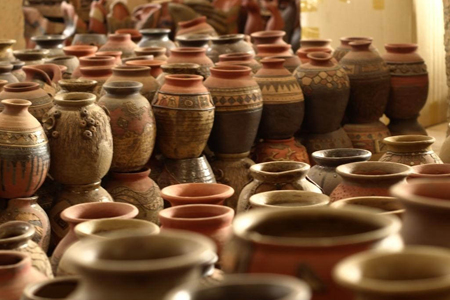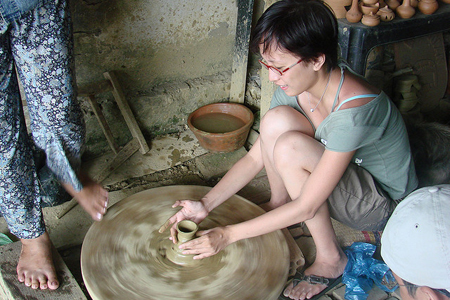About 50 km from Hanoi, the village of Tho Ha in Viet Yen district, Bac Giang province is famed for its pottery and its Vietnamese ancient architecture of Red River Delta.
According to artisans in the village, Tho Ha was one of three oldest ceramic centers from Vietnam apart from Phu Lang (Que Vo, Bac Ninh) and Bat Trang (Gia Lam District, Hanoi) with a long-standing pottery history. From 11th – 12th centuries, Dao Tri Tien - the father of the career in the village, was sent to China to learn Chinese pottery arts. After returning to Vietnam, he taught Tho Ha’s villagers to produce pottery with red, yellow and dark colored clay.

Tho Ha pottery flourished from the 14th century. This village was an economic center for pottery, full of kilns, businessmen, and boats trading in ceramics. Tho Ha pottery products are inimitable as they are the high crockery, waterproof, and smooth bred-brown color. Ceramics had everlasting durability despite being buried in the ground or soaked in water.

As time changes, the pottery-making trade has become the past. Nowadays, Tho Ha is mentioned as an ancient village which well preserves the pure Vietnamese ancient values: the village gate which is huge and the ancient wells made of brick and unglazed terracotta crockeries. Get away from bustling and hustling city of Hanoi, head to Tho Ha village and seek the peaceful atmosphere of the old days with the real taste of the country life coming from the field, hundred-year-old banyan trees and the river wharf and also from old red bricks which paves the way. When stroll around small and zigzag alleys that run along high walls with ancient houses constructed from broken part of terracotta from the past, you may feel like walking deeply into an alley of the Hanoi’s old quarter or of the ancient town of Hoi An.
With the ancient beauty with ancient architectures, the ancient and traditional craft village of Tho Ha has created great appeal for tourists at home and abroad and those who study architectures and arts to visit and find inspiration.
